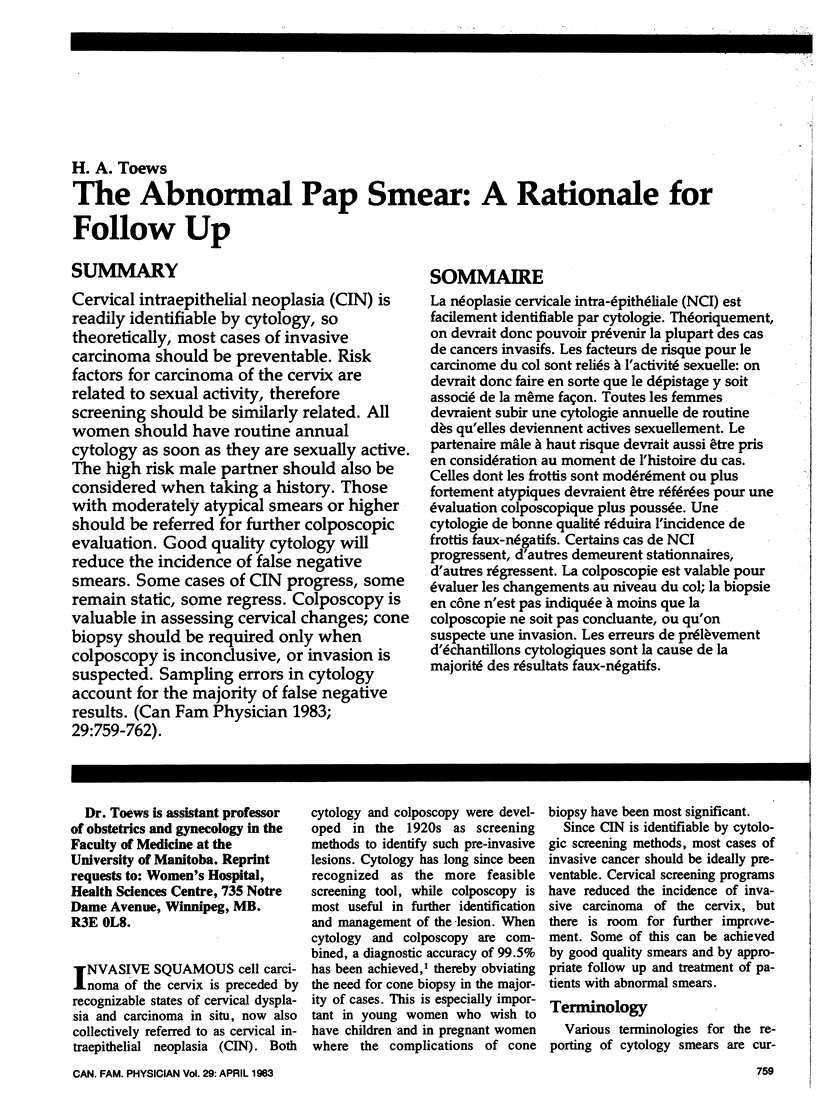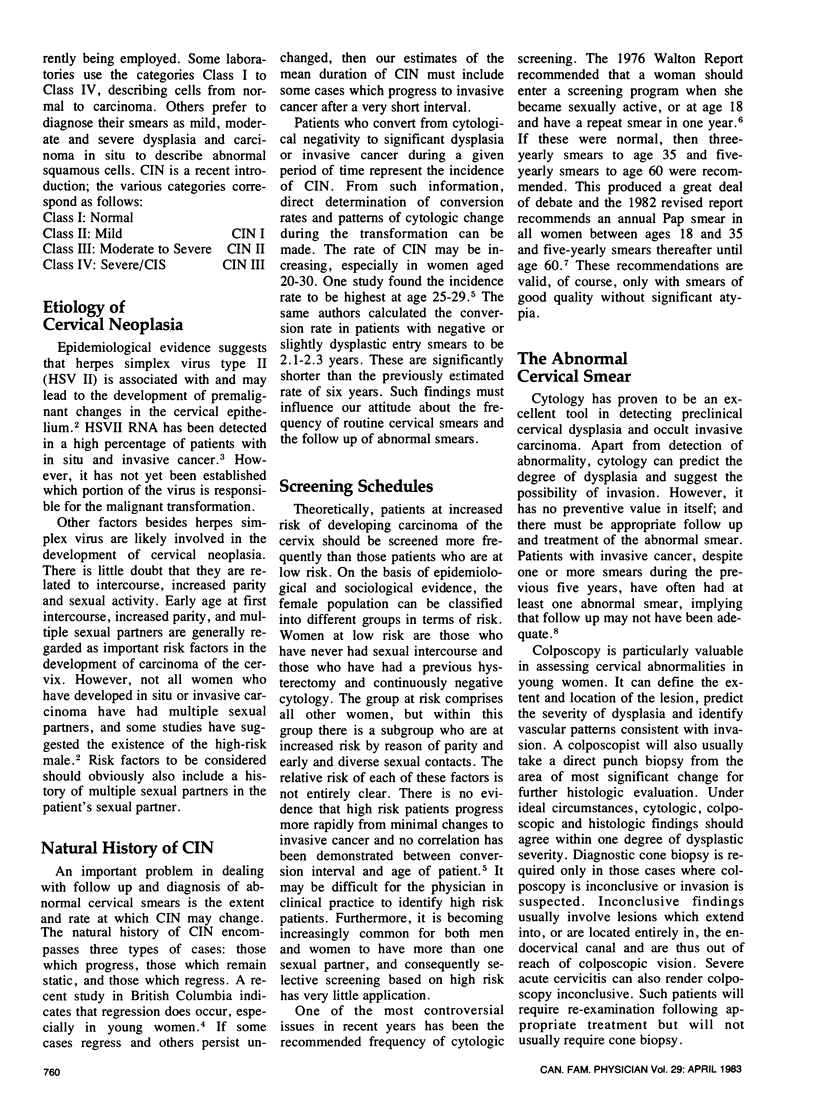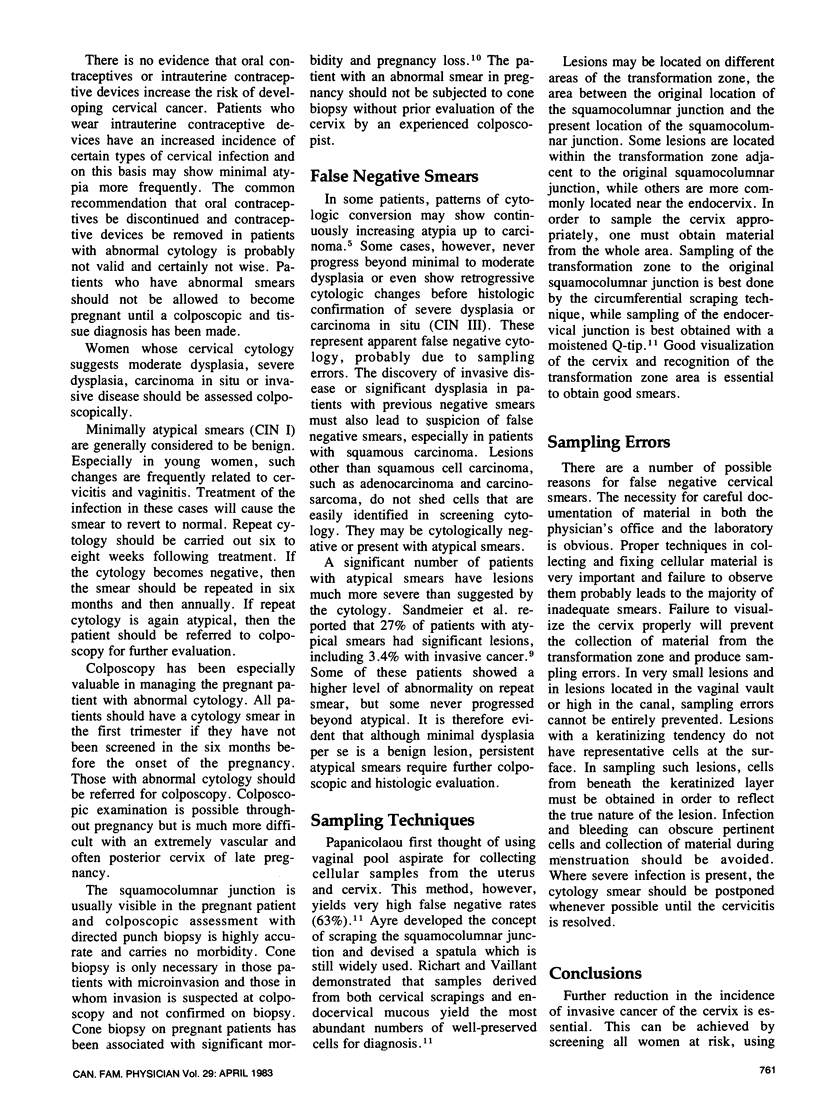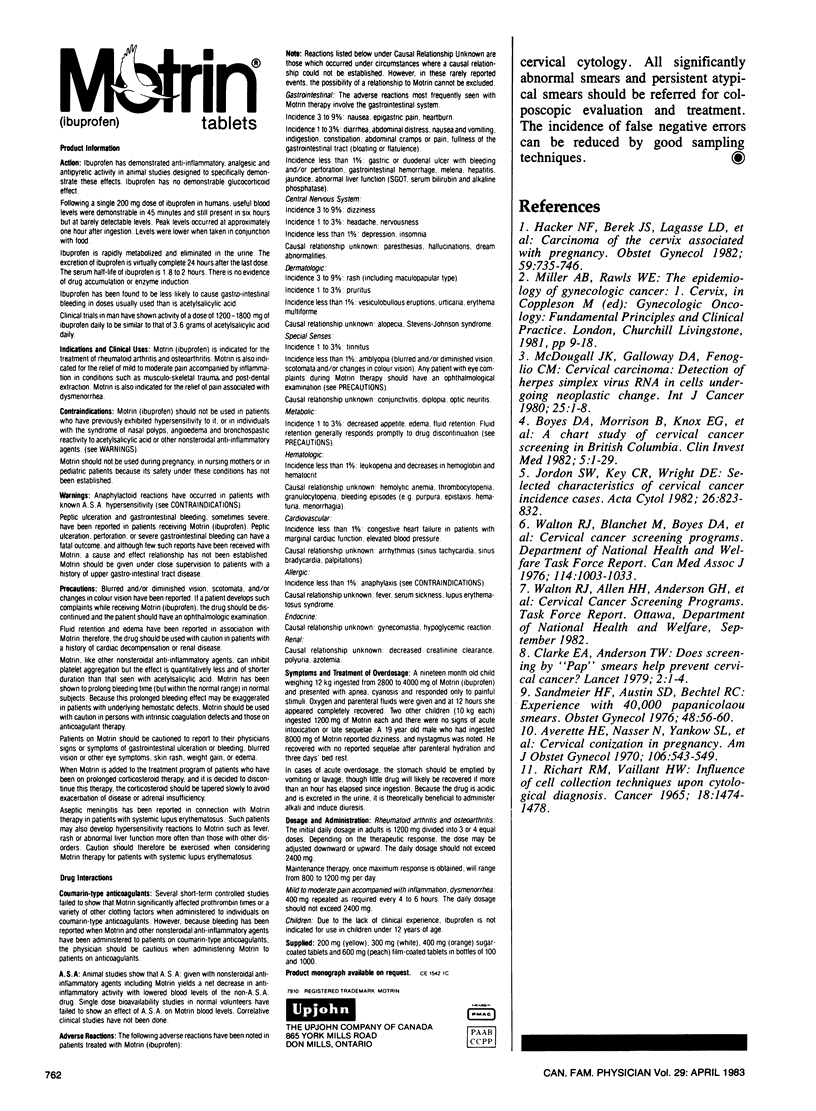Abstract
Cervical intraepithelial neoplasia (CIN) is readily identifiable by cytology, so theoretically, most cases of invasive carcinoma should be preventable. Risk factors for carcinoma of the cervix are related to sexual activity, therefore screening should be similarly related. All women should have routine annual cytology as soon as they are sexually active. The high risk male partner should also be considered when taking a history. Those with moderately atypical smears or higher should be referred for further colposcopic evaluation. Good quality cytology will reduce the incidence of false negative smears. Some cases of CIN progress, some remain static, some regress. Colposcopy is valuable in assessing cervical changes; cone biopsy should be required only when colposcopy is inconclusive, or invasion is suspected. Sampling errors in cytology account for the majority of false negative results.
Full text
PDF



Selected References
These references are in PubMed. This may not be the complete list of references from this article.
- Averette H. E., Nasser N., Yankow S. L., Little W. A. Cervical conization in pregnancy. Analysis of 180 operations. Am J Obstet Gynecol. 1970 Feb 15;106(4):543–549. doi: 10.1016/0002-9378(70)90039-6. [DOI] [PubMed] [Google Scholar]
- Boyes D. A., Morrison B., Knox E. G., Draper G. J., Miller A. B. A cohort study of cervical cancer screening in British Columbia. Clin Invest Med. 1982;5(1):1–29. [PubMed] [Google Scholar]
- Clarke E. A., Anderson T. W. Does screening by "Pap" smears help prevent cervical cancer? A case-control study. Lancet. 1979 Jul 7;2(8132):1–4. doi: 10.1016/s0140-6736(79)90172-7. [DOI] [PubMed] [Google Scholar]
- Hacker N. F., Berek J. S., Lagasse L. D., Charles E. H., Savage E. W., Moore J. G. Carcinoma of the cervix associated with pregnancy. Obstet Gynecol. 1982 Jun;59(6):735–746. [PubMed] [Google Scholar]
- Jordan S. W., Key C. R., Wright D. E. Selected characteristics of cervical cancer incidence cases. Acta Cytol. 1982 Nov-Dec;26(6):823–832. [PubMed] [Google Scholar]
- McDougall J. K., Galloway D. A., Fenoglio C. M. Cervical carcinoma: detection of herpes simplex virus RNA in cells undergoing neoplastic change. Int J Cancer. 1980 Jan 15;25(1):1–8. doi: 10.1002/ijc.2910250102. [DOI] [PubMed] [Google Scholar]
- Richart R. M., Vaillant H. W. Influence of cell collection techniques upon cytological diagnosis. Cancer. 1965 Nov;18(11):1474–1478. doi: 10.1002/1097-0142(196511)18:11<1474::aid-cncr2820181117>3.0.co;2-v. [DOI] [PubMed] [Google Scholar]
- Sandmire H. F., Austin S. D., Bechtel R. C. Experience with 40,000 Papanicolaou smears. Obstet Gynecol. 1976 Jul;48(1):56–60. [PubMed] [Google Scholar]


